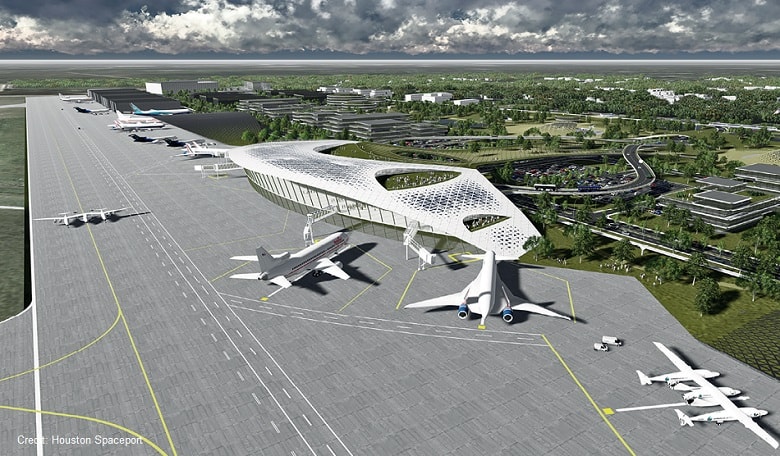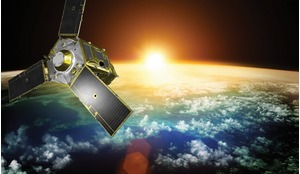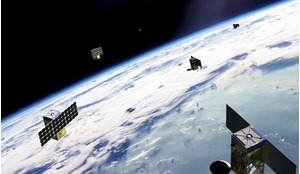Famous for being the home of mission control during the Apollo program, the city of Houston now has its very own commercial spaceport – the tenth such facility in the US. Based at Ellington Airport, its proximity to a large population limits activity to horizontal launches and landings by spacecraft. But it provides the opportunity to develop space-related industries, research and education with local, national and international partners.
Texas, and this year the Federal Aviation Administration (FAA) made Ellington Field the nation’s tenth commercial spaceport.
In granting the Houston Airport System their spaceport operator’s license, the FAA’s Dr. George Nield noted that while space travel was traditionally a government-led enterprise, today it is increasingly reliant on private investment. Commercial spaceports are playing a major role in this development.
Speakers from the City of Houston, NASA, academia and business were represented at the launch event, as well as an international presence in the form of the UK’s Satellite Applications Catapult. As the United States transitions from a federal space program to a commercial spaceflight market, Ellington Airport (EFD) has the opportunity to ensure Houston’s continued leadership in space. The spaceport designation was the culmination of two years’ work by the Houston Airport System (HAS) and their colleagues. The licensing process included environmental impact assessments and an opportunity for public discourse. In 2012, HAS commissioned a Spaceport Feasibility Study by Reynolds, Smith & Hills, Inc. (RS&H) to evaluate the technical capabilities of the airport. It concluded that a spaceport at EFD was feasible with modest infrastructure improvements. The following year, HAS completed economic and business studies. These confirmed that Houston was well placed to participate in commercial space activities such as aerospace engineering, component/composite development and fabrication, space vehicle assembly, astronaut training, zero-gravity scientific and medical experiments, microsatellite development, and space tourism. In August 2013, Houston’s City Council approved the formal pursuit of a commercial spaceport license from the FAA – Office of the Commercial Space Transportation (FAA/AST).
To picture the type of launch that would be feasible, think of Virgin Galactic’s White Knight Two aircraft carrying the SpaceShipTwo vehicle.
The operator’s license makes the Houston Spaceport a reality and signals the beginning of work to make Ellington Field a true gateway to space. The location of a spaceport in a large metropolitan area (Houston is the United States’ fourth largest city) is somewhat unique and provides opportunities as well as challenges. The major challenge is that there is no clear range for a traditional space launch. As a result, the Houston Spaceport will be limited to horizontal launches, with access to space achieved through restricted flight zones in the Gulf of Mexico.
To picture the type of launch that would be feasible, think of Virgin Galactic’s White Knight Two aircraft carrying the SpaceShipTwo vehicle. Horizontal landings are also possible. To this end, a letter of agreement has been signed between HAS and Sierra Nevada Corporation’s Space Systems division to explore the possibility of landing the Dream Chaser cargo ship. Dream Chaser is a lifting body spacecraft that launches on a conventional rocket but, like the Space Shuttle, lands as a glider.
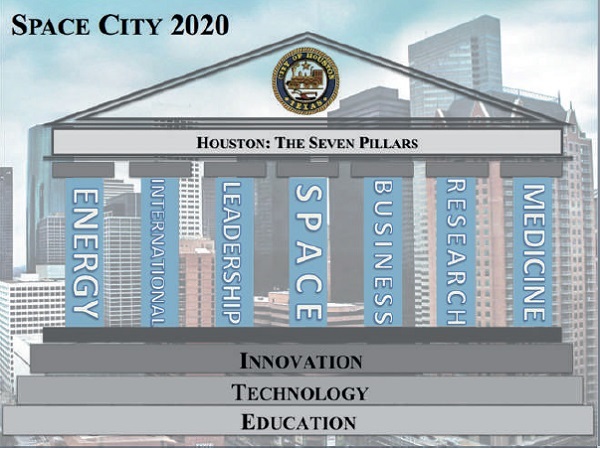 The seven economic pillars of the City of Houston.
The seven economic pillars of the City of Houston.
Other challenges include the safe containment and handling of oxidizers and other combustible propellants, and the integration of airspace operations between general aviation, military operations and commercial spaceflight. All these challenges were discussed and plans put in place to satisfy the requirements of the FAA-AST for future commercial spaceflight launches.
Beyond spacecraft launches
These limitations also provide an opportunity to create a spaceport that is something more than simply a launch facility. We envisage the Houston Spaceport as a catalyst for a wide range of space-related industry, research and education. EFD will become a regional centre for a cluster of aerospace entities that would act as an incubator for innovation and growth in the space and aviation sector. This approach makes use of the strengths of the Greater Houston region. Houston is a high tech city centred on the three pillars of energy, medicine and space. But it is also an international city with a reputation for leadership, business development and world-class research built on the strengths of technology, innovation and education.
The proximity of the Houston Spaceport to the NASA Johnson Space Center, the Port of Houston, the Texas Medical Center, a global energy industry hub and a number of internationally renowned universities provides a unique environment. The spaceport will be a collaborative facility with space as the primary focus but with an eye towards research and development opportunities with other industry sectors in the region.
Key to the Houston Spaceport vision is the engagement of the business community from each of the identified sectors. This will be grown over time but the spaceport will be looking to engage a mix of traditional aerospace, emerging space, and space utilization enterprises together with space application developers and innovative start-ups. The cornerstones of this activity will be the development of an innovative Design Solutions Laboratory, an aerospace cluster, and an international space applications centre. The diversification of activity is a guiding principal for the successful sustainability of a spaceport, particularly one where the launch options are minimal or severely constrained.
The natural purpose of a spaceport is to focus on aerospace manufacturing and assembly in addition to launch and service provision. Aerospace is a major industry in the Houston region.
One aim of the Houston Spaceport is to create an Aerospace Cluster that will harness local strengths in industry and academia, together with the NASA Johnson Space Center, to build an integrated approach to 21st Century aerospace research, design and development. This will serve to attract other companies, large and small, to the spaceport. Ellington has existing airfield infrastructure, direct access to restricted airspace over the Gulf of Mexico, and over 400 acres of land available for development of hangars, research centers, fabrication and assembly shops, and training facilities. The Houston Spaceport is currently in negotiations to acquire its first facility and work is underway to complete the design and planning of the first phase of the envisioned cluster, which is expected to be complete by December 2015. These plans will be shared during the SpaceCom conference in November 2015.
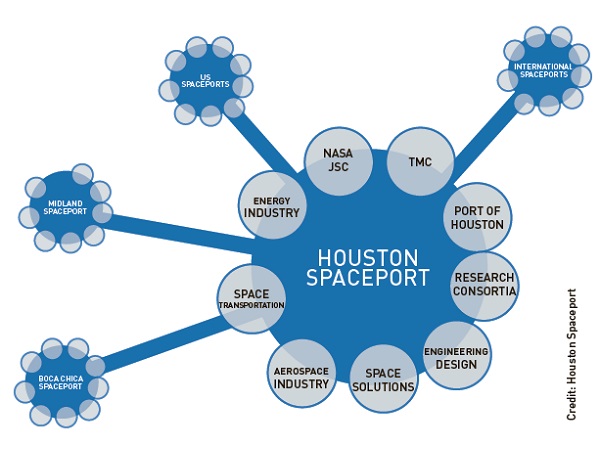 Houston Spaceport will collaborate with local organizations and other spaceports for the benefit of space research.
Houston Spaceport will collaborate with local organizations and other spaceports for the benefit of space research.
The confluence of aerospace companies, from the large corporations to small single-focus start-ups, in an environment of innovation and collaboration is an exciting prospect that will lead to the development of new technologies and new partnerships. In addition, the close association with regional universities and community colleges will help generate and nurture the skilled workforce badly needed by the industry, as well as pave the way for the next generation of space technologists.
International innovation
The Satellite Applications Catapult, based in Harwell UK, will be the first international partner of the Houston Spaceport. The Catapult (sa.catapult.org.uk) is an independent innovation and technology company, created by the UK government to further develop the downstream space sector. Space-derived data is being utilized by many non-space sectors to spot trends, monitor supply chains, stay ahead of regulation, assess compliance, manage resources and organize emergency response. To explore the applications of such an enterprise in Houston, the Rice Space Institute, in conjunction with the UK Science and Innovation Network and Catapult, hosted Space4Houston in January 2015. It focused on how the utilization of satellite data could help two important sectors in the region: Maritime (including port operations) and City Planning/Emergency Response. This event was very successful and laid the groundwork for the Catapult/Spaceport partnership.
The key idea is to utilize space-derived data and information from high-resolution imaging, LIDAR, RADAR, and multi-wavelength spectroscopy for targeted terrestrial industry sectors to help improve their efficiency and effectiveness. Houston is an ideal location for such an effort given the scale, range and diversity of the regional economy. The Spaceport/Catapult partnership is a major step in building the bridges between resources in space and needs on the ground across multiple industries.
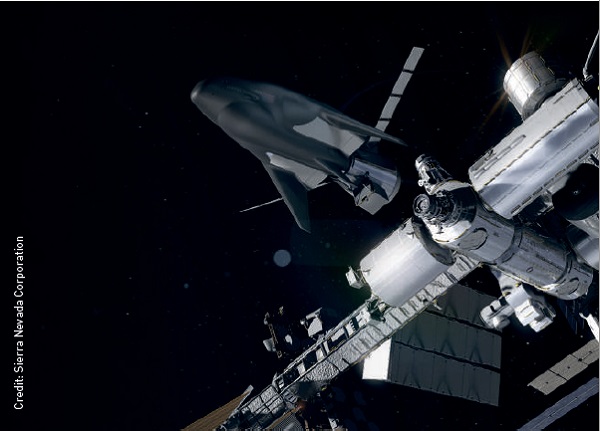 When Dream Chaser flies back to Earth, it may land at the Houston Spaceport.
When Dream Chaser flies back to Earth, it may land at the Houston Spaceport.
One of the first projects being considered by the new Houston Spaceport as a foundational capability will be the Design and Solutions Laboratory (DSL). The DSL will provide the locus for a multi-purpose design and fabrication lab open to universities, small and mid-size businesses, start-up companies and aerospace contractors. The facility will have a primary emphasis on aerospace solutions but will more broadly be a catalyst for space-related problem solving and application. The DSL will be a resourced facility that provides design, fabrication, test and implementation capabilities coupled to classroom and collaboration space for technology and workforce development. This will enable the proposed range of users to exercise the concept development cycle, produce working prototypes that solve problems for the space sector and provide an application path for promising engineering and material breakthroughs from academia.
the close association with regional universities and community colleges will help generate the skilled workforce badly needed by the industry, as well as paving the way for the next generation of space technologists.
As the inaugural capability development project for the Houston Spaceport, the DSL will provide high-profile research, development, training and education to attract aerospace companies to Ellington. This will build awareness around the country and develop an infrastructure to foster collaboration between industry, academia and NASA’s JSC. The design space will provide the necessary resources to facilitate concept development and design for a wide range of purposes. These include projects from aerospace companies and NASA, development space for small innovative start-up companies, and educational space for student engineering design teams.
In addition, a Computer Design Space, Fabrication Laboratory and Incubation Center will augment the DSL. This will enable state-of-the-art design and manufacturing technologies that will shepherd sponsored projects through design, fabrication, prototyping, testing and deployment.
A magnet for students
At universities across the country, students are looking for more from their education. They demand to be challenged, want to solve real-world problems, and desire to have an impact on the world. To address this, university engineering and science programs now partner with business schools, innovation centers, maker labs, incubators, and accelerators. This helps to broaden the educational experience, foster the development of innovators and produce the next generation of technology leaders.
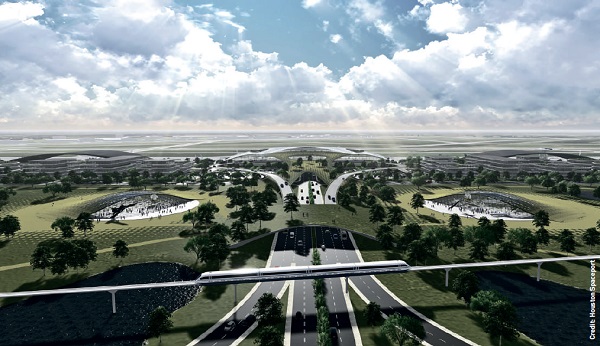 With design facilities and transport links to the USA’s fourth largest city, Houston Spaceport is intended to attract both established aerospace companies and small start-ups.
With design facilities and transport links to the USA’s fourth largest city, Houston Spaceport is intended to attract both established aerospace companies and small start-ups.
The challenges and opportunities provided by space exploration and the utilization of space resources enable us to satisfy all of these ambitions. Broader access to space, both physically and intellectually, opens up a wealth of possibilities for 21st century education, where leadership and relevance are fast becoming major value-added components. The Houston Spaceport will provide an opportunity to couple the lessons learned from almost six decades of space exploration with the growing new space environment in which entrepreneurship and innovation are key. Such endeavors can be the bridges between the developing ‘new space’ commercial culture and what we might call the transitioning space “establishment”.
The Houston Spaceport may be the tenth US commercial spaceport but it certainly won’t be the last. Within the next few years the number will grow, with the most prominent addition in the US being the proposed SpaceX facility in Southwest Texas at Boca Chica. Adding in the Midland Spaceport and Blue Origins private launch facility in West Texas, the State will boast four commercial space facilities in the next three to four years. Collaboration is important for the Houston Spaceport, not just within the state but across the country and also internationally, with a growing interest in spaceports developing across the world. While there will inevitably be competition for commercial space business between various facilities, states, and countries, collaboration is crucial to build the industry and demand. Each spaceport will have a variety of strengths that can be pooled for greater effectiveness. At the Houston Spaceport, we envisage a cluster of activity that combines space technology, space know-how and space data to the benefit of a wide range of industry, government and academic partners. Each spaceport will have its own focus, partners and capabilities but together they can help change the face of the commercial space industry.
A spaceport’s strength and its role as a regional economic driver will come from its ability to diversify its activities, collaborate with partners who bring additional capabilities, and take advantage of local talent and ideas. In doing so, it will generate new solutions, grow the high-tech workforce, and adopt space not just as a destination but also as a resource.
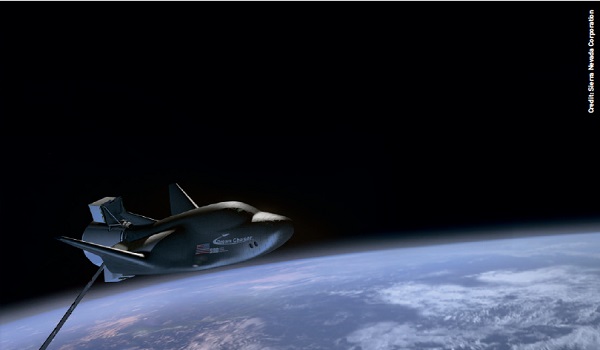 Sierra Nevada Corporation’s uncrewed Dream Chaser spacecraft in orbit.
Sierra Nevada Corporation’s uncrewed Dream Chaser spacecraft in orbit.
To this end, the City of Houston will be hosting the first annual international spaceport summit at the November 2015 SpaceCom Exposition (spacecomexpo.com). The purpose is to facilitate a conversation among spaceport operators and their supporting city leaders that will address the challenges and opportunities provided by this new chapter in space exploration. By engaging the international spaceport community, this focused discussion will lay the foundation for future development and partnership in the effort to democratize space, and open up space for the betterment of life on Earth.
Spaceports can be the catalyst for this new, thoroughly 21st century approach to space utilization.





